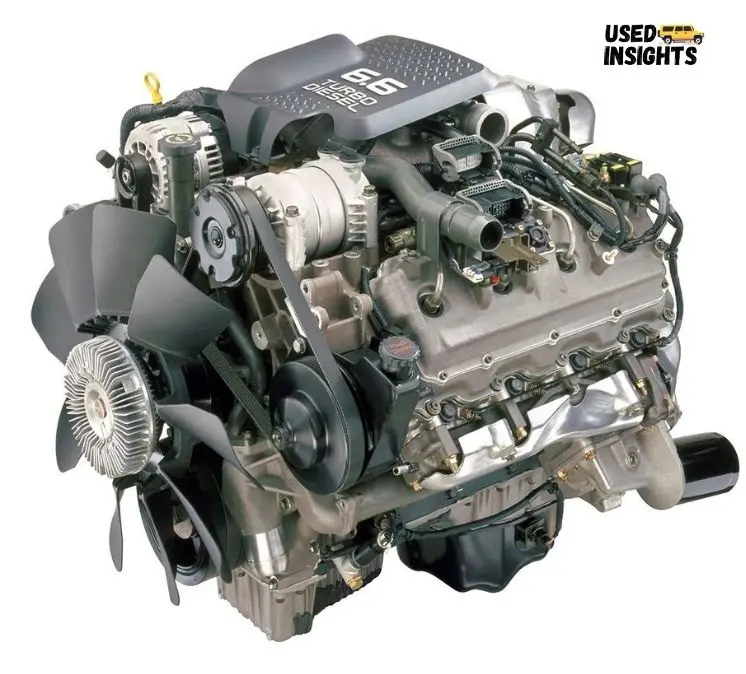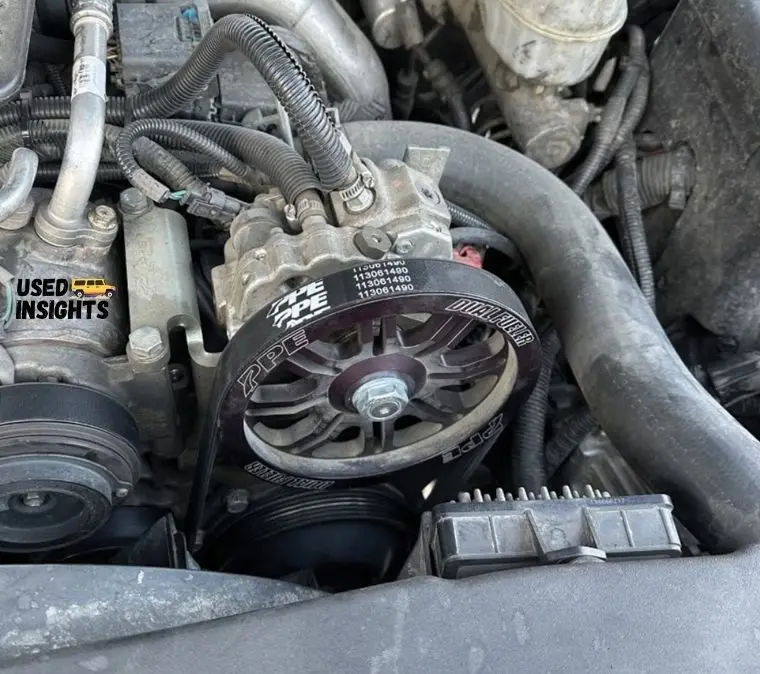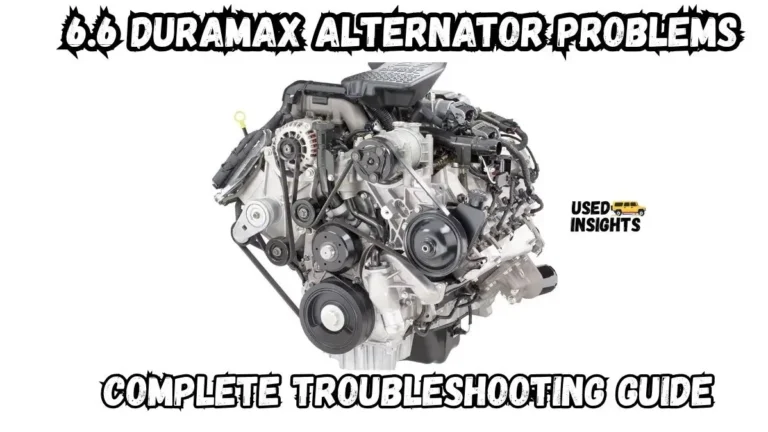The alternator serves as a crucial component within your vehicle’s electrical architecture, responsible for converting mechanical energy into electrical power to operate various systems throughout your truck.
These electricity-dependent components encompass your radio, lighting systems, audio equipment, air conditioning, and numerous other electrical accessories that keep your vehicle functioning optimally.
What Makes the 6.6 Duramax Alternator Special?
The 6.6 Duramax alternator stands out as one of the most robust and dependable power generation units designed specifically for diesel trucks. These high-performance alternators deliver impressive amperage ranging from 105 to 250 amps while maintaining a consistent 12-volt output, with specifications varying based on individual vehicle models and their respective electrical requirements.
Power Distribution Capabilities
This sophisticated alternator system manages power distribution to numerous vehicle components, including radio systems, headlight assemblies, battery maintenance, ignition circuits, Engine Control Module (ECM), cabin lighting, rear lighting, turn signals, heating systems, ventilation and air conditioning (HVAC) networks, entertainment systems, power windows, electronic locks, and various convenience accessories.
Additionally, critical safety mechanisms such as Anti-lock Braking System (ABS), airbag networks, reverse cameras, and sensor arrays all depend on the Duramax alternator’s reliable power generation.
For heavy-duty operations, these alternators can support emergency lighting systems, refrigeration units, microwave equipment, and other specialized applications that demand consistent electrical supply.

Common Problems Despite Reliability
While the 6.6 Duramax alternator maintains exceptional dependability ratings, various factors can still trigger operational issues. These alternator-related problems create direct and indirect impacts on engine performance, making it critical to address even seemingly minor symptoms before they escalate into major failures.
The Six Most Common 6.6 Duramax Alternator Problems
Understanding these frequent issues helps truck owners identify problems early and implement appropriate solutions to prevent costly repairs and extended downtime.
1. Electrical System Malfunctions
Electrical complications manifest through malfunctioning interior accessories, compromised power windows, headlight irregularities, and other equipment failures. These issues typically stem from damaged alternator components and loose system connections that prevent adequate electrical supply distribution.
Root Causes of Electrical Failures
- Deteriorated wiring harnesses
- Compromised electrical system integrity
- Defective voltage regulator operation
- Unstable connection points
- Internal short circuits
- Malfunctioning diode assemblies
Identifying Electrical Problems
Electrical alternator failures present recognizable symptoms including intermittent light flickering, dashboard warning light activation, reduced performance of interior components, compromised battery function, and occasionally, distinctive burning odors indicating component damage.
Electrical Issue Solutions
- Thoroughly examine all connected wiring and inspect for disconnections or corrosion throughout the electrical network
- Apply appropriate lubricants to corroded components or areas showing early corrosion signs
- Replace worn-out drive belts that affect alternator operation
- Conduct comprehensive testing to verify the alternator meets your vehicle’s total electrical demands
- Consider installing an upgraded alternator unit for enhanced performance and reliability
2. Overheating Complications
Excessive electrical demand, debris accumulation, component malfunctions, inadequate ventilation space, worn drive belts, and elevated ambient temperatures contribute to alternator overheating issues. This thermal stress can cause severe complications including engine stalling, battery damage, and permanent vehicle system failure.
Overheating Symptoms and Effects
When alternator overheating occurs, the unit becomes extremely hot to touch while emitting distinctive burning rubber odors. Dashboard warning lights activate due to battery system failures, potentially causing extensive damage to the entire charging network. An overheated alternator loses its power transmission capability, resulting in insufficient electrical supply for dependent components.
Overheating Solutions
- Assess your vehicle’s complete electrical power requirements
- Install a premium upgraded alternator designed to handle increased electrical demands
- Replace damaged or worn drive belt assemblies
- Consider implementing a dual alternator configuration for improved electrical stability
3. Battery and Charging System Problems
Battery and charging complications stem from various minor and major vehicle issues that can become critical factors affecting overall performance. Voltage regulator malfunctions and alternator defects are primary causes of battery drain, while damaged wiring connections, insufficient power generation, slipping drive belts, and parasitic power draw contribute to battery deterioration and premature system failure.
Impact on Vehicle Performance
High power-consuming components can overwhelm the alternator’s charging capacity, resulting in insufficient battery charging and gradual system degradation that affects overall vehicle reliability.
Battery and Charging Solutions
- Perform comprehensive alternator voltage output testing
- Replace voltage regulators when output exceeds standard specifications
- Thoroughly clean and reconnect all cable connections
- Install high-quality replacement batteries when damage is extensive and causes engine stalling
- Upgrade to higher-capacity alternators for improved battery charging support
4. Bearing and Cable Complications
Incorrect installation procedures create bearing and cable problems that compromise overall alternator operation. Contaminated bearings operate sluggishly or fail completely, while improper bearing installation increases accident risks. Loose cable connections and damaged wiring generate error codes and produce distinctive burning odors that indicate system problems.
Progressive Failure Patterns
Error codes appear when cables lack proper connections and wiring sustains damage. These symptoms gradually trigger comprehensive electrical system failures that require immediate attention.
Bearing and Cable Solutions
- Remove contaminants using appropriate small tools and cleaning methods
- Replace damaged and compromised cable assemblies
- Manage excessive mechanical pressure through adjustable accessory components
- Maintain bearing smoothness through proper lubrication schedules
5. Voltage Regulator Malfunctions
Defective voltage regulators cause battery complications by failing to maintain consistent voltage output levels. This essential component ensures proper electrical transmission by regulating electricity flow generated by the alternator. When voltage regulators malfunction, they cannot control electrical output effectively, resulting in overvoltage or undervoltage conditions.
Voltage Regulation Impact
Excessive voltage can completely destroy charging system components, while insufficient voltage prevents complete battery charging. Maintaining standard voltage output requires immediate attention to voltage regulator problems.
Voltage Regulator Solutions
- Monitor and test voltage output levels regularly
- Prevent electrical fluctuations by managing electrical accessory usage
- Repair voltage regulators promptly, or replace them immediately when damage is severe
6. Noisy Alternator Operation
Damaged pulleys, problematic bearings, worn drive belts, and debris accumulation create noisy alternator conditions characterized by unusual grinding or whining sounds. Multiple interrelated factors often contribute to these acoustic symptoms that indicate deteriorating component conditions and operational problems.
Noise as a Diagnostic Tool
Alternator noise serves as an important indicator revealing poor component conditions and identifying troublesome parts requiring immediate attention.
Noise Problem Solutions
- Systematically inspect each alternator component to identify specific problem areas
- Ensure alternator cleanliness and proper lubrication maintenance
- Verify proper drive belt and pulley adjustment and alignment
- Consult professional technicians when noise persists over extended periods
Comprehensive Diagnostic Procedures for 6.6 Duramax Alternator Issues
Proper diagnosis represents a fundamental aspect of resolving alternator problems effectively. Identifying the specific problematic component enables targeted repair approaches that address root causes rather than symptoms.
Step-by-Step Diagnostic Process
Follow this systematic five-step approach to diagnose specific alternator problems affecting your vehicle:
- Visual Inspection: Examine all connections for misalignment, inspect wires for wear, check bearings for damage, look for frayed cables, and evaluate drive belt condition through thorough component observation
- Voltage Testing: Verify alternator voltage output remains within the normal operating range of 13.5 to 14.7 volts during operation
- Battery Assessment: Evaluate battery condition and charging quality to determine alternator functional status
- Electronic Scanning: Utilize OBD-II diagnostic scanners to identify charging system faults through specific error code analysis
- Acoustic Evaluation: Listen for abnormal sounds such as grinding or growling noises that indicate mechanical problems
Professional Assistance and Replacement Costs
When diagnostic procedures fail to identify problematic components, seek expert assistance from qualified service centers. Persistent problems following repair attempts indicate alternator replacement necessity to prevent engine damage. Duramax alternator replacement costs typically range from $747 to $842, including professional labor expenses.
Essential Maintenance Strategies for 6.6 Duramax Alternators
Maintaining alternator health proves essential for sustaining engine longevity and performance quality. Regular maintenance doesn’t require specialized treatment or extensive time commitments, yet provides significant benefits for battery life extension and system reliability.

Basic Maintenance Protocol
Implement these fundamental maintenance practices to ensure optimal alternator condition:
- Conduct regular visual inspections of all components
- Clean electrical connections to prevent corrosion buildup
- Monitor voltage output levels consistently
- Maintain component cooling and proper lubrication schedules
Advanced Maintenance Considerations
Ensure smooth electrical flow without excessive system loads through proper management techniques. Dual-alternator configurations and premium alternator versions help manage electrical pressure and prevent system overload. When installing or replacing components, select parts from reputable, high-quality manufacturers to ensure extended durability.
Proactive Problem Prevention
Address minor issues promptly with appropriate attention to prevent future complications. Quick resolution of small problems creates hassle-free future operation and prevents costly major repairs that could affect overall vehicle reliability and performance.

